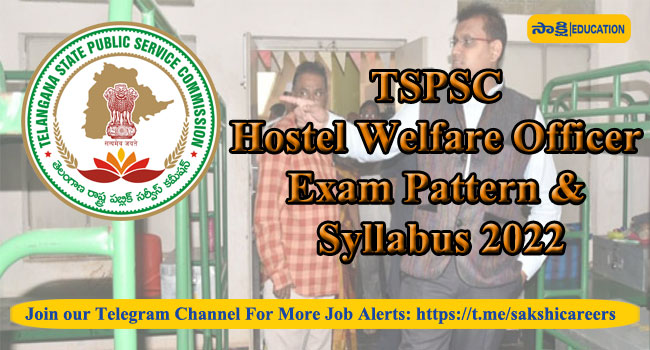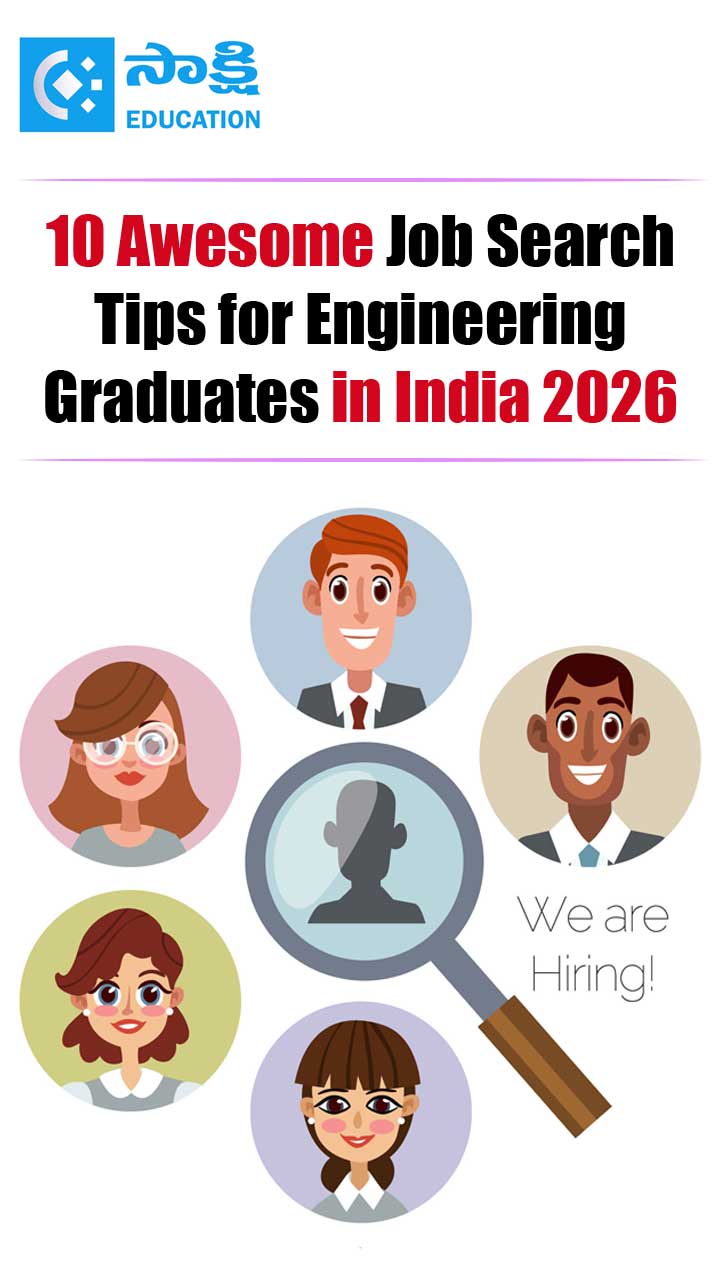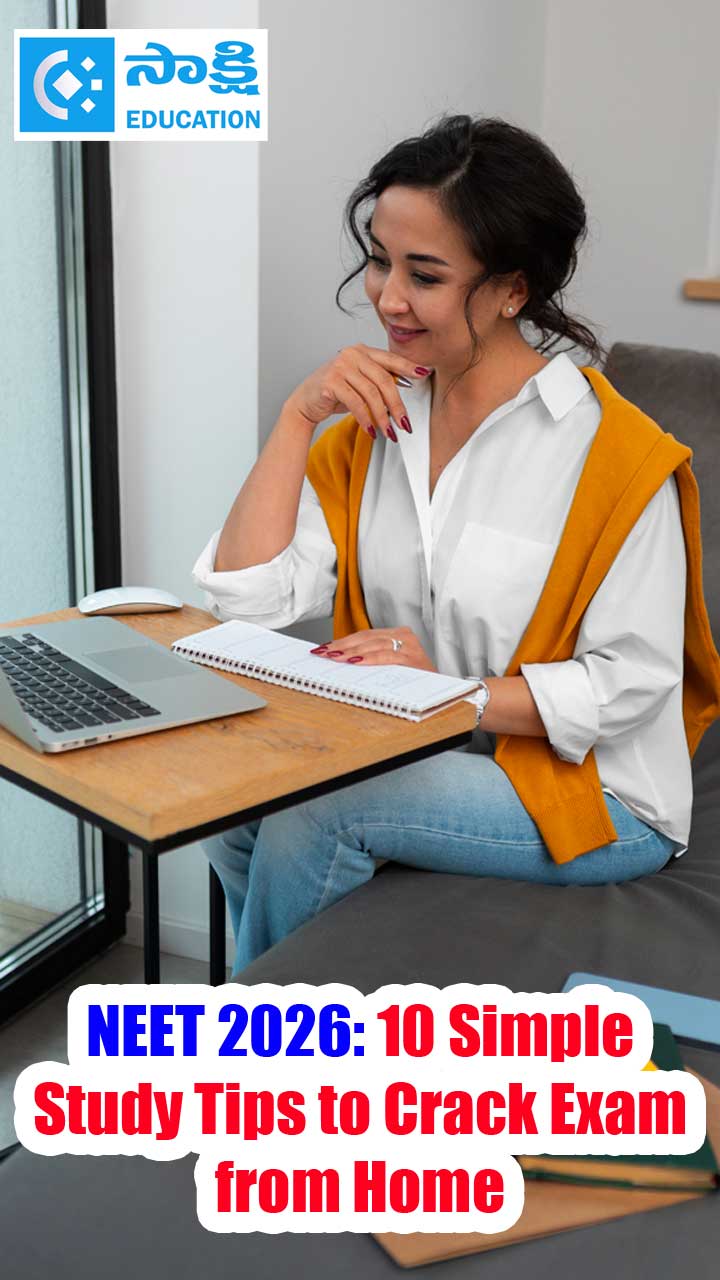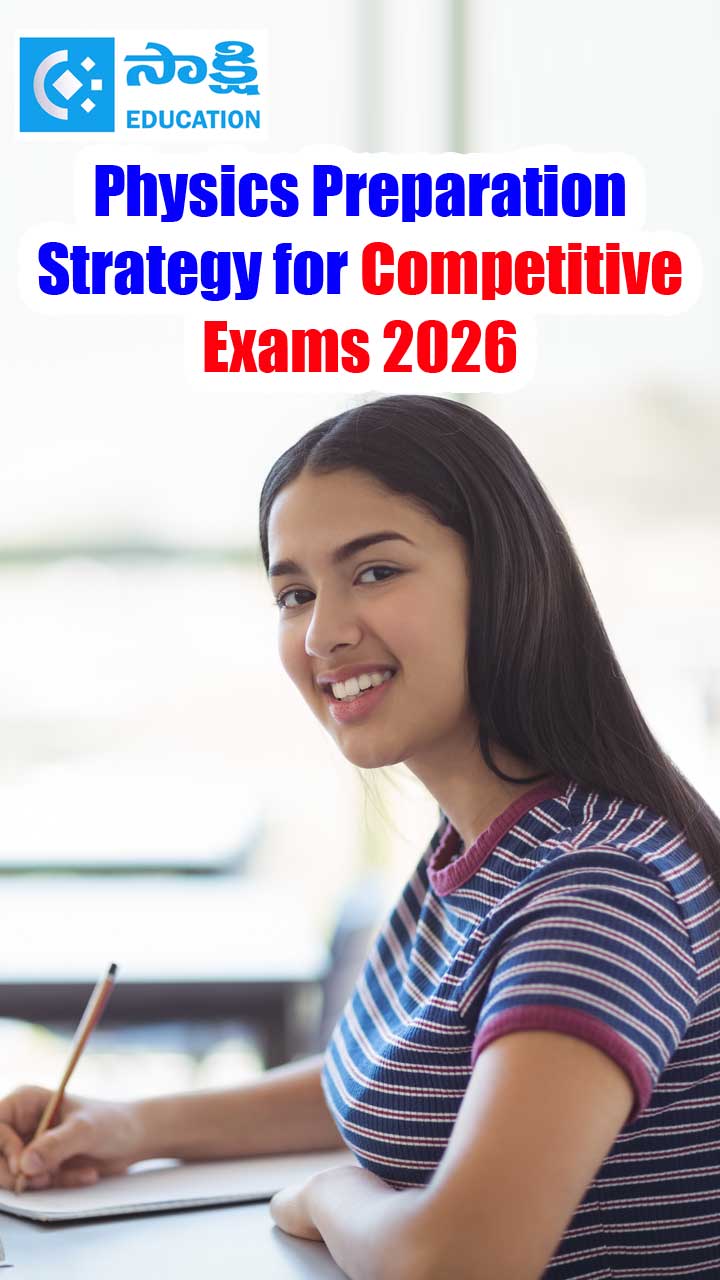TSPSC Hostel Welfare Officer Grade I & II Exam Pattern & Syllabus 2022

Scheme of Examination for the Post of Hostel Welfare Officer Grade I In Tribal Welfare Department; Hostel Welfare Officer Grade II In Tribal Welfare Department, Scheduled Caste Development Department, BC Welfare Department and Lady Superintendent Children Home In Women Development And Child Welfare Department
|
Written Examination (Objective Type) |
No. of Questions
|
Duration (Minutes)
|
Max Marks |
|
Paper-I: General Studies
|
150 |
150 |
150 |
|
Paper-II: Education (Bachelor in Education Level)
|
150 |
150 |
150 |
|
Total |
300 |
||
TSPSC Hostel Welfare Officer Notification 2022 out; 581 Posts!!
Syllabus for the Post of Hostel Welfare Officer Grade I In Tribal Welfare Department; Hostel Welfare Officer Grade II In Tribal Welfare Department, Scheduled Caste Development Department, BC Welfare Department and Lady Superintendent Children Home In Women Development And Child Welfare Department
PAPER-I: General Studies
1. Current Affairs – Regional, National and International
2. International Relations and Events.
3. General Science; India‟s achievements in Science and Technology
4. Environmental issues and Disaster Management
5. Economy of India and Telangana
6. Geography of India with a focus on Telangana
7. Indian Constitution and Polity with a focus on local self Government
8. Society, Culture, Heritage, Arts and Literature of Telangana
9. Policies of Telangana State
10. History of Modern India with a focus on Indian National Movement
11. History of Telangana with special emphasis on Movement for Telangana Statehood
Paper-II: Education (Bachelor in Education Level)
1. The Constitutional Context Education as a means of social justice in the Indian Constitution; Constitutional values and education (Preamble, Fundamental rights and duties); the Right to Free and Compulsory Education 2010 (RTE) and inclusion; Education in the concurrent list and its implications
2. Philosophical of Education: Knowledge, Reason and Beliefs; Experience and Knowledge; Curriculum and Teacher Methods of Philosophical Inquiry: Observation, Intuition, Contemplation, Logic, Experimentation, Meditation and Yoga. Indian and Western Schools of Philosophy; Study of the following thinkers, MK Gandhi; Rabindranath Tagore; Swami Vivekananda; Sri Aurobindo; Jyothibha Phule, Jiddu Krishnamurthi; Maria Montessori, Friedrich Froebel, John Dewey.
3. Sociology of Education: Socialization and Education, Social change and Education, Culture and Education, Modernization and Education, Equality of Educational opportunities; Education of Weaker Sections; School and Society:Professional Development of Teachers, Child Rights and Pedagogy, School Curriculum, Values and Education. Peace Education. Challenges posed for education by the socio-cultural and economic context: childlabour, child marriage, displacement and migration; Composition of Indian society and its implications for education: Inequality, discrimination, exclusion and marginalization in the context of language, religion, caste, class, gender, region, and disability; Issues and challenges in the education of Dalits, OBCs, the Scheduled Tribes, girls and religious minorities; the role and agency of teachers in the education of abovementioned groups.
4. Educational Psychology
A. Human Consciousness: Human Consciousness and Human Behavior; Methods of Psychological inquiry in education.
B. Childhood and Adulthood: Understanding the complexities of Childhood and Adulthood; Impact of social, cultural and aesthetic factors in Child Development.
C. Growth and Development: Principles of Growth and Development, Stages of Development-Infancy, Childhood, Child Development, Physical, Mental, Social and Emotional Development, Adolescence and Adolescence Behavior, Educational Implications of Growth and Development
D. Human Cognition, Learning, Motivation: Nature of Human cognition and its complexities, Human Learning, Theories of Learning (Behavioral, Cognitive, Emotional and Social) and their relevance to classroom teaching, Learning and Motivation; Various theories of motivation (intrinsic and extrinsic), and their applications for classroom teaching.
E. Personality and Human Diversity: Meaning and significance of the study of individual differences, Inter and intra Individual difference and its assessment, Concept of Personality and theories of Personality Development its assessment(Projective and Non-Projective Methods); Yoga and Personality Development.
5. Special Education and Disability studies: Understanding and scaffolding learners with special needs – poor achievers, under achievers, low-level of intellectual functioning, giftedness and creativity, Need and significance of Guidance and Counseling in schools.
6. Understanding the Self: Importance of understanding the self among teachers and students ; Self-concept and Self-esteem; Personal and Social Identity; Development and Characteristics of the Self; Self during childhood and adulthood; Socio-cultural contexts and Self Development.
7. Educational Statistics Descriptive Statistics- Measures of Central tendency, Measures of Variability, Normal Probability Distribution, Skewness and Kurtosis Correlational Techniques and Inferential Statistics-Concept of Standard Error, Concept and Types of Correlation, Karl Pearson‟s Product Moment Correlation, Spearman‟s Rank Order Correlation.
8. Contemporary Indian Education: Universalization of Education: Significance, constitutional guarantees and problems, involved in implementing. Wastage and Stagnation in Education-Meaning, causes, problems and remedial measures. Adult Education and Functional Literacy Meaning, scope, problems involved and strategies for remedial action. Non-Formal Education- contemporary significance, problems, methodology ;National Education Policies and NEP-2020.
9. School and Community Relationships: Need and importance of community school – community relations; ways of bringing them together, making use of community resources, some practical strategies to facilitate appropriate relationships. Medium of Instruction and Language Education Policies in India, three-language formula, its implications and difficulties in implementing. Family life and Population Education. School Health ; Community Health and Education.
10. Life Long Learning and Moral & Spiritual Education
A. Life Long Education: Meaning, need and scope, approach and role of teachers. Teacher Education-pre-service and in-Service-Professional Organizations teachers. Vocational Education and Vocationalisation of Education. Quality of Primary Education- Minimum level of Learning Approach. Recommendations of various Education Commissions and Committees in India on Life Long Learning
B. Moral and Spiritual Education: Meaning and scope, approaches to Moral Education; Difference between Moral and Religious Education, Practical Work. National and Emotional integration: meaning, nature, problems, and implementation. Celebrating National days and role of schools and teachers. International understanding, education for peace, disarmament, and co-existence. Yoga and spiritual education; Education of the socially and culturally disadvantaged; Equality of opportunity and strategies to implement social justice oriented programmes.
11. Sustainable Development and Education: Sustainable Development Goals (SGDs); Ensure inclusive and equitable quality education and promote Lifelong Learning Opportunities for all; Contributions of Govt. of India and UN Organizations towards sustainable development. Role of school and community in sustainable development.
12. School Management and Administration: Institutional Planning and School Development, Principles of School Management, Administration of Schools and Evaluation of Schools and Teachers Performance. Educational Leadership and Institution Building. Teacher Professional Development.
Scheme of Examination for the post of Warden Grade I, Warden Grade II, Matron Grade II, Matron Grade II Posts in Director of Disabled & Senior Citizens Welfare
|
Written Examination (Objective Type) |
No. of Questions
|
Duration (Minutes)
|
Max Marks |
|
Paper-I: General Studies
|
150 |
150 |
150 |
|
Paper-II: Diploma in Special Education Level (Visual Impairment) OR Diploma in Special Education Level (Hearing Impairment)
|
150 |
150 |
150 |
|
Total |
300 |
||
Syllabus For The Post of Warden Grade I, Warden Grade II, Matron Grade II, Matron Grade II Posts in Director of Disabled & Senior Citizens Welfare
PAPER-I: General Studies
1. Current Affairs – Regional, National and International
2. International Relations and Events.
3. General Science; India‟s achievements in Science and Technology
4. Environmental issues and Disaster Management
5. Economy of India and Telangana
6. Geography of India with a focus on Telangana
7. Indian Constitution and Polity with a focus on local self Government
8. Society, Culture, Heritage, Arts and Literature of Telangana
9. Policies of Telangana State
10. History of Modern India with a focus on Indian National Movement
11. History of Telangana with special emphasis on Movement for Telangana Statehood
PAPER-II: Diploma in Special Education (Visual Impairment)
I. Understanding Disability
A. Concept, Meaning and Definition - Handicap, Impairment, Disability; Activity limitation, Habilitation and Rehabilitation; Definition, categories (Benchmark Disabilities) &the legal provisions for PWDs in India.
B. Definition, Causes & Prevention, Types, Educational Implication, and Management of 1.Locomotor Disability-Poliomyelitis, Cerebral Palsy/Muscular Dystrophy; 2.Visual Impairment-Blindness and Low Vision; 3.Hearing Impairment-Deafness and Hard of Hearing; 4.Speech and language Disorder; 5.Deaf-blindness and multiple disabilities, 6. Intellectual Disability; 7.Specific Learning Disabilities; 8.Autism Spectrum Disorder; 9.Mental Illness, Multiple Disabilities; 10.Chronic Neurological conditions and Blood Disorders.
II. Early Identification and Intervention:
1. Concept, need, importance and domains of early identification and intervention of disabilities and twice exceptional children; 2.Organizing Cross Disability Early Intervention services; 3.Screening and assessments of disabilities and twice exceptional children; 4.Role of parents, community, ECEC and other stakeholders in early intervention as per RPD- 2016 and NEP 2020; 5.Models of early intervention-(home-based, center-based, hospital-based, combination) with reference to transition from home to school.
III. Anatomy and Physiology of Human Eye
1. Structure of the human eye, 2.Physiology of Vision, 3.Refraction and Refractive Errors: Myopia, Hyperopia, Astigmatism and Presbyopia 4.Common Eye Diseases and their Implications, 5.Prevention of Blindness and Eye Care.
IV. Effects of Blindness and Low Vision
1. Limitations imposed by blindness and low vision; 2.Psycho-social implications of blindness and low vision; 3.Effect of congenital and adventitious blindness and low vision on motor, cognitive language and socio-emotional development; 4.Attitude of family and community towards persons with blindness and low vision; 5.Myths and stereotypes about blindness and low vision.
V. Educational Perspectives: Blindness and Low Vision
1. Aims and objectives of education of children with blindness and low vision; 2.Principles of teaching children with blindness and low vision; 3.Use of residual vision for educational purposes; 4.Early childhood Education- need and importance; 5.Educational devices: conventional devices and technology based
VI. Children with Visual Impairment with Additional Disabilities (VIAD)
1. Concept and definition of children with VIAD; 2.Types of additional disabilities; Common causes and syndromes; 3.Characteristics of children with VIAD/Deaf blindness; 4.Impact of Multisensory impairment on development of child with VIAD; 5.Early identification, early intervention and its significance in education of the children with visual Impairment with additional disabilities;
VII. Management of Children with VIAD
1. Assessment of children with VIAD; 2.Teaching strategies for children with VIAD; 3.Understanding communication and modes of communication for children with visual impairment and other sensorial disorders-implications; 4.Architectural modifications for persons with visual impairment having locomotor disorders; 5.Role of multidisciplinary team in the education of VIAD Children.
VIII. Working Braille
1. English Braille – Grade I : A. Seven-line system of Braille; B. English alphabets; C. Different ways of embossing dot-combinations; D. Various signs used in English Braille punctuation marks, Capitalization, italics, numeric, Numerals; E. Practice on the use of Braille writing devices–Pocket Frames, Inter-Line Frames, Inter-Point Frames, Braillers; F. Reading and writing English Braille– Grade I; 2. English Braille- Grade II: A. English contractions and abbreviation; B. Writing poems; C. Reading and writing English Grade II Braille. 3. Teaching Braille: A. Pre-requisite skills for Braille reading; B. Braille reading readiness; C. Methods of teaching Braille reading; D. Introduction of Braille writing and Braille writing devices; E. Techniques of rapid reading and note taking skills.
IX. Orientation and Mobility & Vision Training
1. Training Under Blind-fold Condition, 2. Using Safety Techniques, 3.Sighted Guide, 4.Orientation & Mobility for Low Vision, 5.Teaching age-appropriate Orientation & Mobility skills to children with Low Vision 6.Functional Vision & Vision Training, 7.Use of cane techniques – Grip, Rhythm, Swing, Gait, Arc, Taking Direction using Cane, 8.Preparing tactile/auditory maps for blind and children with low vision, 9.Indoor and outdoor travel with long/folding/smart canes with use of Residual vision, 10.Sensory Training: Meaning and Importance; Tactile and Auditory discrimination; Olfactory, Gustatory and Kinesthetic discrimination; Visual discrimination (use of residual vision) and Sensory integration.
X. Use of Special Appliances, Aids &Adaptations
1. Abacus 2.Taylor Frame, 3.Tactile geometry kit and its use for drawing tactile diagrams and figures, 4.Use of embossed globe, tactile maps and charts. 5. Magnification: Concept & Limitations; Optical Devices: Selection and Use; Computer and Mobile based Magnification Solutions; Non-Optical Devices; Adaptation & Environmental Modifications (Contrast, Illumination & Large Print).
Paper II: Diploma in Special Education (Hearing Impairment)
I. Understanding Disability
A. Concept, Meaning and Definition - Handicap, Impairment, Disability; Activity limitation, Habilitation and Rehabilitation; Definition, categories (Benchmark Disabilities) &the legal provisions for PWDs in India.
B. Definition, Causes & Prevention, Types, Educational Implication, and Management of
1. Locomotor Disability-Poliomyelitis, Cerebral Palsy/Muscular Dystrophy; 2.Visual Impairment-Blindness and Low Vision; 3.Hearing Impairment-Deafness and Hard of Hearing; 4.Speech and language Disorder; 5.Deaf-blindness and multiple disabilities, 6. Intellectual Disability; 7.Specific Learning Disabilities; 8.Autism Spectrum Disorder; 9.Mental Illness, Multiple Disabilities; 10.Chronic Neurological conditions and Blood Disorders.
II. Early Identification and Intervention:
1. Concept, need, importance and domains of early identification and intervention of disabilities and twice exceptional children; 2.Organizing Cross Disability Early Intervention services; 3.Screening and assessments of disabilities and twice exceptional children; 4. Role of parents, community, ECEC and other stakeholders in early intervention as per RPD- 2016 and NEP 2020; 5.Models of early intervention-(home- based, center-based, hospital-based, combination) with reference to transition from home to school.
III. Hearing & Deafness
1.Parts of the ear and process of hearing, 2.Introduction to physics of sound, production and propagation of sound, 3.Physical and psychological attributes of sound, 4.Hearing Impairment – Definition, Classification in terms of age of onset, type, degree, nature. 5.Causes and prevention of hearing loss, 6.Effects of Hearing impairment on various domains of development, education and employment, 7.Hearing loss impacting speech perception, 8.Early identification, and critical period for learning language and hearing, 9.Developmental milestones of auditory behavior, 10.Cultural aspects of deafness.
IV. Causes, Identification of Deafness, Prevention and Assessment of Hearing
1.Causes and prevention of hearing loss, 2.Early identification, and critical period for learning language and hearing, 3.Developmental milestones of auditory behavior, 4.Formal and informal assessment of hearing, 5.Conditioning for auditory assessment, 6.Audiometery for children, 7.Audiograms and its interpretation, 8.Amplification Devices and Hearing Aids.
V. Auditory Learning
1. Listening for daily living and learning, 2.Pre-requisites and Audiological information for auditory training and learning, 3.Stages of auditory training, 4.Auditory verbal approach; principles and strategies, 5.Activities for auditory training group and individual.
VI. Communication & Language
1.Communication: Definition, Meaning and Scope, 2.Classification of Communication: Linguistic and Non-linguistic, 3. Language: Definition, Characteristics and Functions, 4.Phases of language developmental in typical children, 5.Pre-requisites for language development &impact of deafness, 6.Oralism: Principles, Justification, Limitations, 7.Educational Bilingualism: Principles, Justification & Limitations, 8. Total Communication: Principles, Justification, and Limitations, 9.New Trends in Oralism – Auditory Verbal Approach (AVA): Principles, Pre requisites & Stages,10. Sign Language & Signing System- distinguishing features
VII. Speech Sounds and Speech Production
1. Definition of speech characteristics of normal speech and functions of speech, 2.Parameters of speech, 3.Mechanism of speech production – structure and function of Respiratory, Phonatory, Articulatory, Resonatory and Regulatory system, 4.Speech as an overlaid function, 5.Speech and Language Disabilities, 6.Non segmental: Intensity, pitch and quality, 7.Segmental aspects of speech: Definition of consonants, vowels, diphthong and blends, 8.Classification of consonants – place, manner, voicing, 9.Classification of vowels, 10.Supra-segmental: Intonation, stress, pause, etc.
VIII. Development of Speech and Speech Problems in Children with Hearing Impairment
1. Stages of development of speech in children with normal hearing (typically developing children), 2.Prerequisites for normal speech and language development, 3.Stages of development of speech in children with hearing impairment, 4.Factors influencing development of speech in children with hearing impairment, 5.Language development in pre and post lingual children with hearing impairment, 6.Speech problems: Articulation errors, Voice problems, Errors in supra-segmental, 7.Speech intelligibility, 8.Evaluation of speech, 9.Evaluation of speech in terms of voice, articulation and Supra-segmental, 10.Profiling in speech of the students in classrooms.
IX. Receptive and expressive language
1. Receptive language; meaning and importance, 2.Forms of receptive language (Visual, listening and reading), 3. Expressive language; meaning and importance, 4.Forms of expressive language (Signing, speaking, writing, performing) 1.5 Myths and realities of receptive and expressive language of Deaf or Hard of Hearing (DHH) students
X. Development of Sign language in children with hearing impairment
1. Early Intervention and critical period for developing sign language 2. Deaf vs. Hearing parents role in developing sign language, 3.Stages of development of Sign language acquisition (milestones), 4. Family centered practices for development of sign language, 5.Incidental and activity based approach for developing Sign Language, 6.Provisions of NEP 2020 for Sign Language, 7.Teaching Sign Language to hearing students, 8. Role of teachers in promoting sign language for inclusion, 9.Promoting Sign language through co-curricular activities, 10. Assessment of Sign language as a school subject















